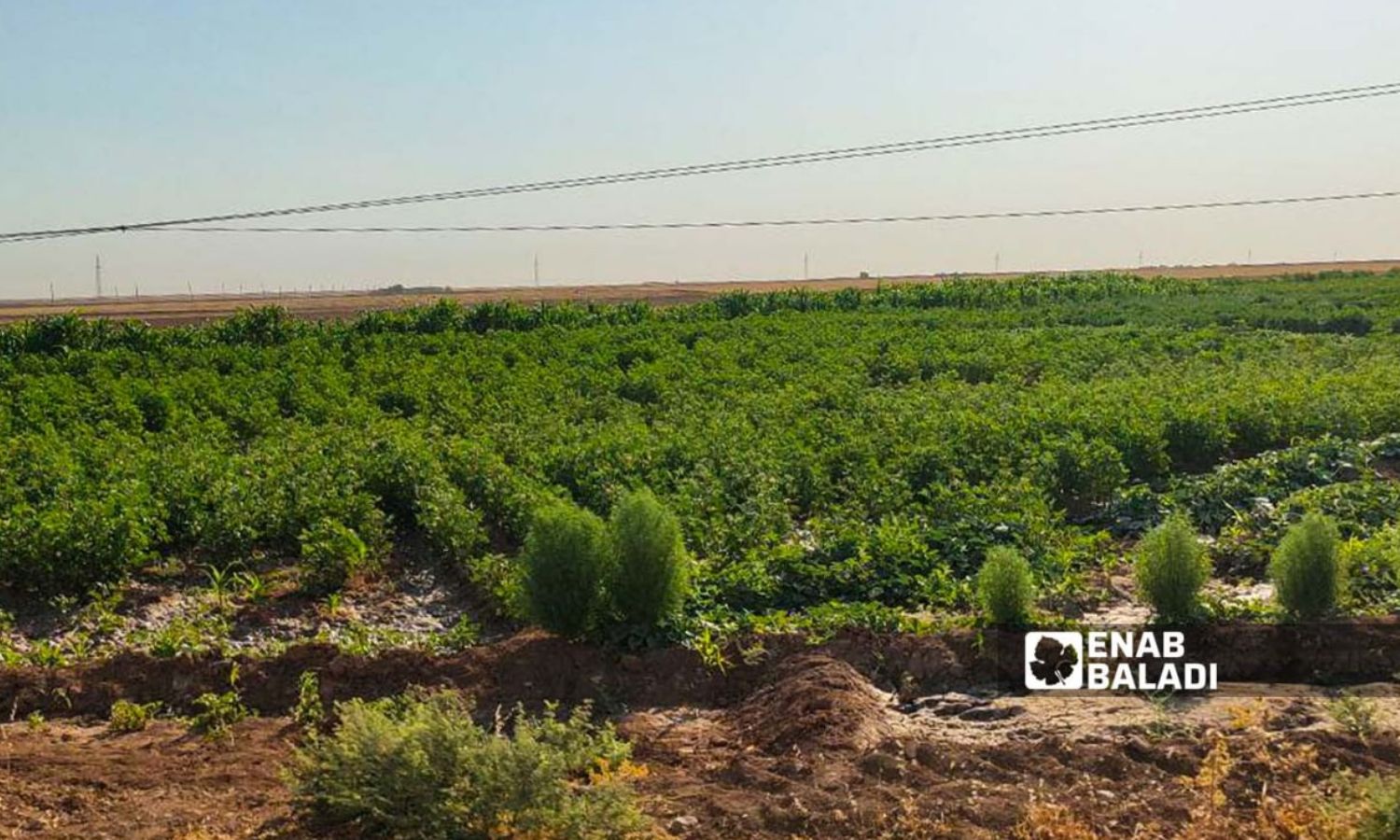



Qamishli – Majd al-Salem
Tamer al-Alawi does not show any optimism about obtaining a rewarding return from his cotton crop planted on an area of five hectares planted in a village in the southern countryside of Qamishli, despite his wish for profit.
Al-Alawi, 49, attributes his pessimism to the extremely high temperatures, the scarcity of fuel, and the great need for water for the cotton crop, which requires repeated irrigation that cannot be implemented in a timely manner, especially in the months of July and August, which is the ripening period of the cotton crop.
Also, the high cost of fertilizers, which must be given to the crop in installments and appropriately with each irrigation, he adds.
Cotton farmers in the northeastern province of al-Hasakah suffer from many problems that threaten to reduce the productivity of the current season and incur more losses.
The most prominent of these problems is the difficulty of securing fuel, despite the pledge of the Autonomous Administration of North and East Syria (AANES) to provide diesel fuel at “affordable” prices throughout the life of the crop.
|
Amid doubts about the Syrian statistics or its absence from the cotton sector, the data of the International Production Assessment Department at the US Department of Agriculture show that al-Hasakah governorate produces 38 percent of the total cotton production in Syria, followed by Raqqa with 24 percent, and then Aleppo with 16 percent. According to US estimates, the total production in Syria decreased to 28 thousand tons after it was approximately 365,000 tons at the height of Syria’s production in 2000. |
On the other hand, farmer Mohammed Hannoush, 60, says that another obstacle lies, in addition to the previous problems, in the price set for buying a ton of cotton by the regime or the AANES.
Hannoush told Enab Baladi that the price was set at 4,000 SYP (approximately one dollar) per kilogram of ginned cotton.
The price is not enough to cover the production costs of the crop, which requires “preparation, cultivation, irrigation, then fertilizing, spraying pesticides, thinning and hoeing repeatedly during the stages of plant growth, until entering the harvest period,” he added.
The harvest period also requires labor, whose wages are not low, in addition to the high expenses for transporting production to the gins.
Hannoush owns seven hectares planted with cotton that needs about three tons of nitrogen fertilizer at a cost of 2,100 USD (the price of a ton is 700 USD). He also struggles with regulating irrigation periods for his crop as a result of the low groundwater level due to the drought in the area.
Number of farmers interviewed by Enab Baladi revealed another threat to cotton crops in the northeastern governorate, which is the pests and insect diseases, especially the almond spiny and American worms.
On 27 July, Jalal Bilal, Director of the Plant Production Department in the regime’s Directorate of Agriculture, said the recorded insect infections in the cotton fields in al-Hasakah “do not exceed 1 percent of the total area planted with the crop, which is below the economic threshold to date.”
However, most of the areas planted with the crop are under the control of the Autonomous Administration and not under the control of the Syrian regime. The AANES did not assess the extent of the spread of insect infestations in the cotton crop.
Cotton cultivation has declined in al-Hasakah governorate since 2011, after it was one of the most important crops in the region, along with wheat and barley.
Agricultural engineer Saleh al-Holu from the southern countryside of al-Hasakah told Enab Baladi that cotton cultivation has deteriorated “terrifyingly” in the governorate, as the area planted with cotton has shrunk from 2011 until now by about 95 percent, as there were about 53,000 hectares cultivated annually with cotton, while the cultivated areas now do not reach 6,000 hectares.
Al-Holu added that cotton cultivation declined in favor of other crops that are less expensive and require limited care when compared to the cotton crop, which is considered one of the “soil stressful crops” and requires many measures throughout the period of growth and harvesting of the crop.
According to a statement by Ahmed Jomaa, Director of the Cotton Office of the Syrian regime government, on 6 August, the area of land planted with the cotton crop this year amounted to about 24,048, with an implementation rate of 40 percent of the areas that were planned to be cultivated.
Jomaa attributed the reason for the decrease in cultivated areas from what was planned to the high cost of production requirements, inappropriate weather conditions, and competition with other crops that do not require large amounts of irrigation, watering, and agricultural work.
if you think the article contain wrong information or you have additional details Send Correction